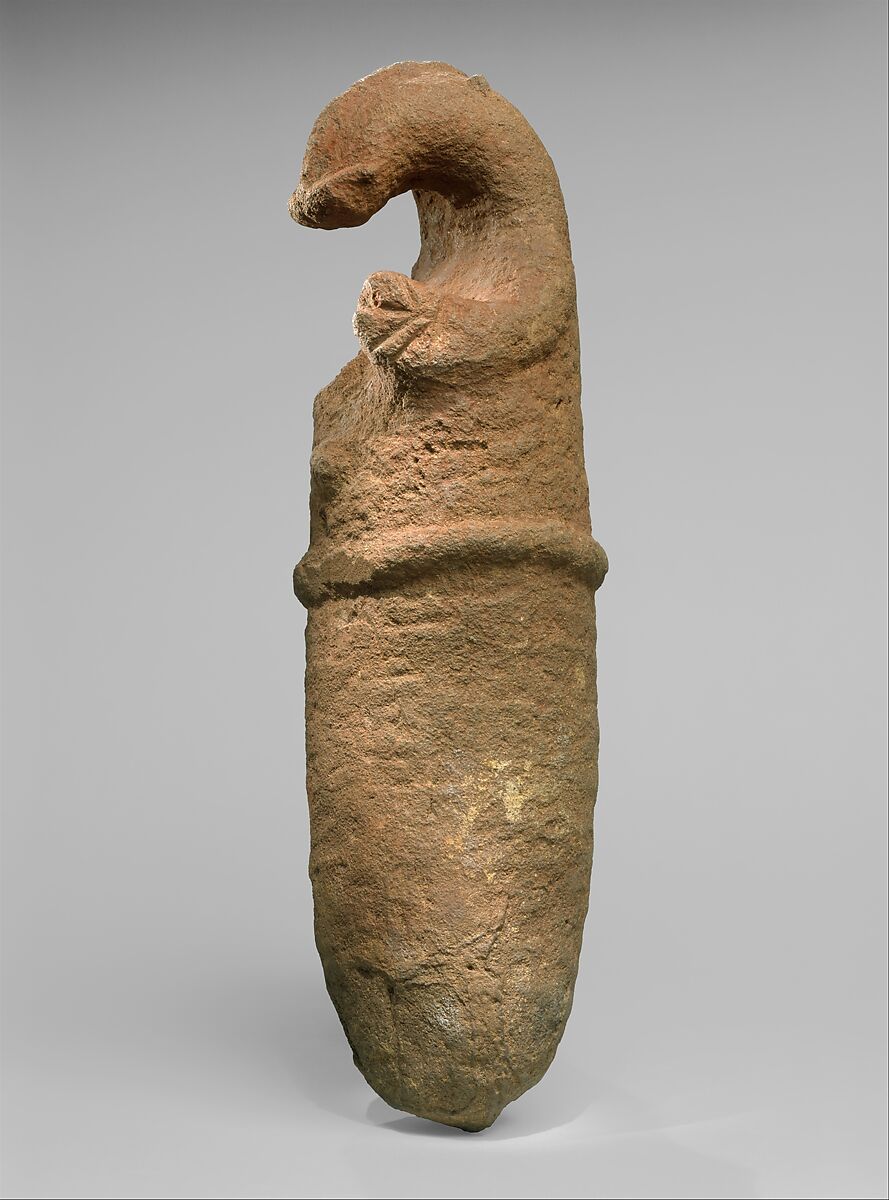Zoomorphic Figure from Papua New Guinea

Annotation
This stone figure from an unknown culture in ancient Oceania may represent an echidna, which is an egg-laying mammal that is related to the platypus. Stone figures from this region were often shaped to represent animals or human heads and could be used as mortars, pestles, club heads, or simply for rituals. Though this figure cannot be conclusively dated because of the lack of secure archaeological evidence, it likely dates from around 1500 BCE in the highlands of Papua New Guinea from an unknown culture. Though the origin and use cannot be conclusively known, these figures likely also had ritualistic significance for ancient populations and may have represented ancestors or totem species. Today, found stone figures such as this one are considered to be of supernatural origin and still feature prominently in ritualistic and religious contexts for the Enga people. These figures can be used in fertility rites or curing illness. Students can study the images of stone figures and consider the connection between the past and current ritualistic significance of such objects.
Credits
Zoomorphic Figure from Papua New Guinea, 1500 BCE-1600 CE, Metropolitan Museum of Art, https://www.metmuseum.org/art/collection/search/314778.